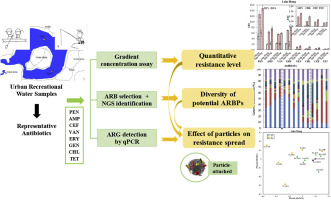
Authors
Yingtian Hu, Dongdong Zhao, Yali Qin, Xiaoping Wang
Three-dimensional fluorescence spectroscopy has been widely used for the analysis of water contaminants. However, the problems of weak signals and overlapping fluorescence peaks remain unresolved. In this work, we studied the impact of absorption on the spectral shape of fluorescence and found that it is a major cause of overlapping peaks and weak signals. An approach is proposed to purify fluorescent signals and enhance fluorescence signatures based on the theory of fluorescence quantum yield. Using this theory, the problems of noise amplification and singularity points were identified, and an optimization algorithm was proposed related to Wiener filtering. For practical application to multiple compounds, three overlapping cases were discussed theoretically. The effectiveness of this procedure in subsequent parallel factor analysis was assessed and compared with original data by conducting experiments with six typical compounds and real water samples. The results indicate that overlapping along the excitation wavelength axis can be reduced despite the existence of multiple compounds, and the sensitivity of weak fluorescent signals can be significantly improved. The proposed method can enhance fluorescence signatures for the separation and analysis of fluorescent components in water contaminants.


![sank [Recovered]](https://freshwaterecology.wordpress.com/wp-content/uploads/2018/09/oestrogen-in-rivers.jpg?w=840)





